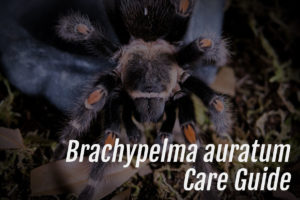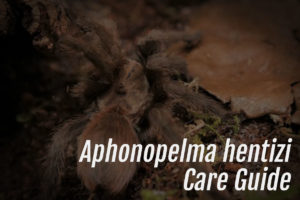Grammostola rosea also known as the Chilean Rose Hair Tarantula
Are you interested in keeping a tarantula as a pet? The Grammostola rosea / Grammostola portier, also known as the Chilean Rose Hair Tarantula, may be the perfect choice for you. These tarantulas are one of the most common in the pet trade and are often found in pet stores worldwide. However, it’s important to know that purchasing a captive-bred specimen from a reputable dealer is crucial, as wild-caught specimens can have parasites or other health issues.
Info Overview
Genus: Grammostola
Species: rose / portier
Common Name: the Costa Rican Zebra or Stripe Knee Tarantula
Living Height: Terrestrial
Urticating Hairs: Yes
World Type: New World
World Location: Chile, Bolivia, and Argentina
Leg Span (DLS): 6” (15cm)
Life Span: F: up to 20 years M: up to 5 years
Growth Rate: Medium
Keeper Level: Beginner
Environment
It’s also essential to note that the Grammostola rosea is a new world terrestrial tarantula that is endemic to scrub lands of Chile, Bolivia, and Argentina. This species is most often grayish-brown with a pinkish hue across the top of their head, and they can grow very slowly until they reach about 5” diagonal leg span.
When first brought into the pet trade, the Chilean Rose Hair was known as Grammostola rosea, and it was available in two color forms: red and normal color forms. After much study on the taxonomy of this species, it was discovered that the true Chilean Rose Hair with the gray or “normal” color form was Grammostola porteri, while the red color form was the actual Grammostola rosea.
Enclosure
Keeping your Grammostola rosea in an appropriate enclosure is essential. If you’re raising spiderlings, an acrylic amac box modified for housing spiderlings is a great option. Once they outgrow that enclosure, move them into an acrylic juvenile enclosure with more width than height. As adults, move them into a 2.5 5-gallon enclosure, making sure to provide your tarantula with at least 3x its leg span in floor space, so it has enough room to move around. It’s important to fill the enclosure up at least halfway or more with substrate as this species is known to climb the walls and across the top of its enclosure, especially after a rehouse.
Feeding
When it comes to feeding your tarantula, it’s important to note that they can go on hunger strikes for months at a time, which is normal behavior for this species. Feed your spiderlings confused flour beetles or flightless fruit flies until they are large enough to start taking pinhead crickets or red runners. For juveniles, feed 2-3 small-medium crickets or one medium dubia roach every 7-10 days, and for adults, feed 4-5 large crickets or one large dubia every 2-3 weeks.
Conclusion
In conclusion, the Grammostola rosea may be the perfect addition to your pet collection. By following these tips, you can ensure that your tarantula lives a happy, healthy life in its new home.
Other Helpful Info!
If you found this post helpful, please consider sharing it. It really helps the site in the search algorithm! Thanks!
Do you have inverts and arachnids? Want a fun way of tracking them? Then download Arachnifiles for Android or iOS today! It’s free!
Want to read more about invertebrate care? Click here to view other care guides!
If you’d like to watch The Tarantula Collective talk about this tarantula, you can watch it here!




